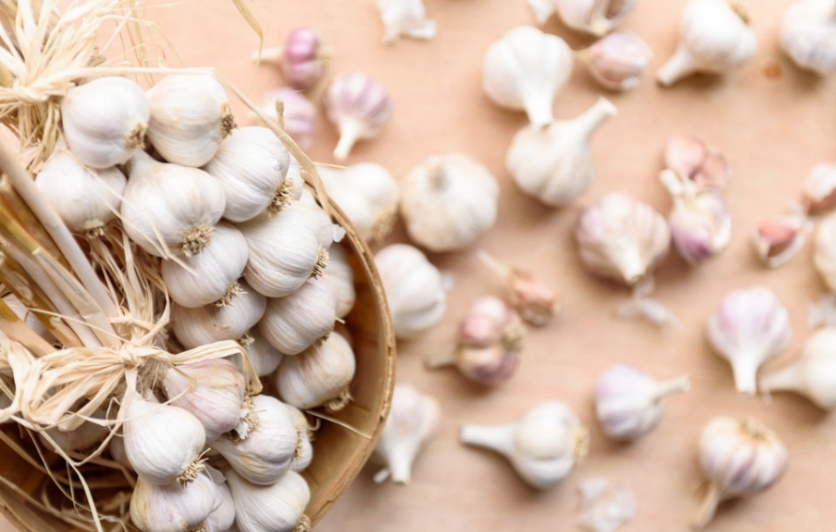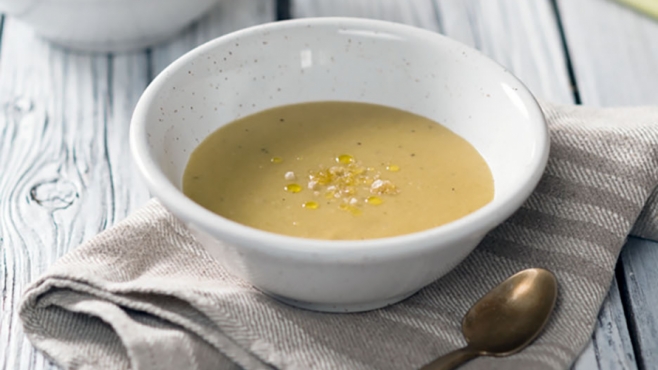Celebrating the Stinking Rose: 5 Garlic Recipes

Throughout human history garlic has been known, among other uses, as a strong repellent — repelling fleas, ticks, mosquitos, a host of diseases, first dates and of course, vampires.
A member of the allium family — among its cousins are onions, chives, leeks and shallots — garlic is full of the sulphur compound, allicin, which is created when you chew, press, crush, chop or grate garlic, causing the sudden release and mixture of other sulphuric compounds found in the clove. This is what gives garlic its familiar “stinking rose” scent and pungent, sometimes fiery, flavour. It’s essentially this plant’s defence mechanism at work — warding off all things evil.
But garlic needs your help to keep another villain at bay — botulism. Garlic, in its raw state, is perfectly safe to eat, but also a perfect host for the Clostridium botulinum bacterium. When garlic finds itself in an anaerobic, moist and warm environment, the potential for botulism spores to grow is greatest. Making garlic oil by dropping a few cloves into a jar of oil and leaving it on the counter is something you should not do. Cooking, refrigeration, vinegar or air flow is what you and your garlic need to stay safe.
Garlic is one of the world’s oldest cultivated crops, dating back more than 5000 years. Its origins are believed to have started somewhere in Central Asia. From there, it became a staple in the lives of the Chinese, Greeks, Romans and the Egyptians, before moving on to South America and throughout the Mediterranean. North Americans really didn’t pick up a taste for fresh garlic until the 1980s, when garlic cultivation made it accessible for farmers to grow a predictable garlic crop and the health-food movement touted the many benefits of using fresh garlic.
Today, 80 per cent of the world’s garlic production is coming from China. If you grab one of those three packs of bulbs or a tub of peeled cloves, it's likely to have come from China, and from the documentaries I've seen, you probably don’t want to know where it has been, why it's so white or why those three bulbs can retail for less than a dollar. Sure, a bulb of locally grown garlic can seem much more expensive, but like many other foods, you need to take all the costs into account and not just its retail price. Besides, a little bit of locally harvested garlic is packed with flavour, which goes a long way.
Speaking of local garlic flavour, below are recipes that are full of garlic in its many forms: roasted bulbs, confit cloves, green garlic and garlic scapes. If you are less familiar with the last two, garlic scapes are the curly flowering stem of the garlic plant. They are available in late June when they are removed to allow the plant to focus on the production of the bulb and not the flower. Next, green garlic is the immature garlic bulb and the tender portion of the garlic stem. Green garlic is available soon after the scapes have been removed. Both the scapes and the green garlic can be quite pungent and their availability fleeting.
Before you jump to the main recipes, you may also want a quick primer on how to make garlic confit and roasted garlic, two staples to keep on hand:
Garlic Confit: Place peeled garlic into a small pot and cover with canola or vegetable oil. Cook the garlic over low heat (only a few small bubbles should be visible) until the garlic has become soft and somewhat translucent, approximately 30 to 40 minutes. The garlic should remain pale in colour. The garlic confit can be kept, in the oil, in a sealed container stored in the refrigerator for a couple weeks.
Roasted Garlic: Preheat the oven to 350F. Trim the stem end of several whole bulbs of garlic and place on a baking sheet. Bake in the oven for about 45 to 60 minutes until you can see the caramelized garlic bulbs start to ooze from the top. Remove from oven. The individual cloves can be peeled or pinched to remove the garlic inside. Store in a sealed container for a couple weeks.
We hope you enjoy garlic in all its forms and give these recipes a try. If you don’t, we can only assume it's because you are indeed vampire."
Communities Near You
What’s happening near you
ANDARA Gallery Presents: Tara Wilkinson I BARNSCAPES
ANDARA GalleryBloomfield
ANDARA Gallery Presents: ODE TO JOY Holiday Art Show and Sale
ANDARA GalleryBloomfield









